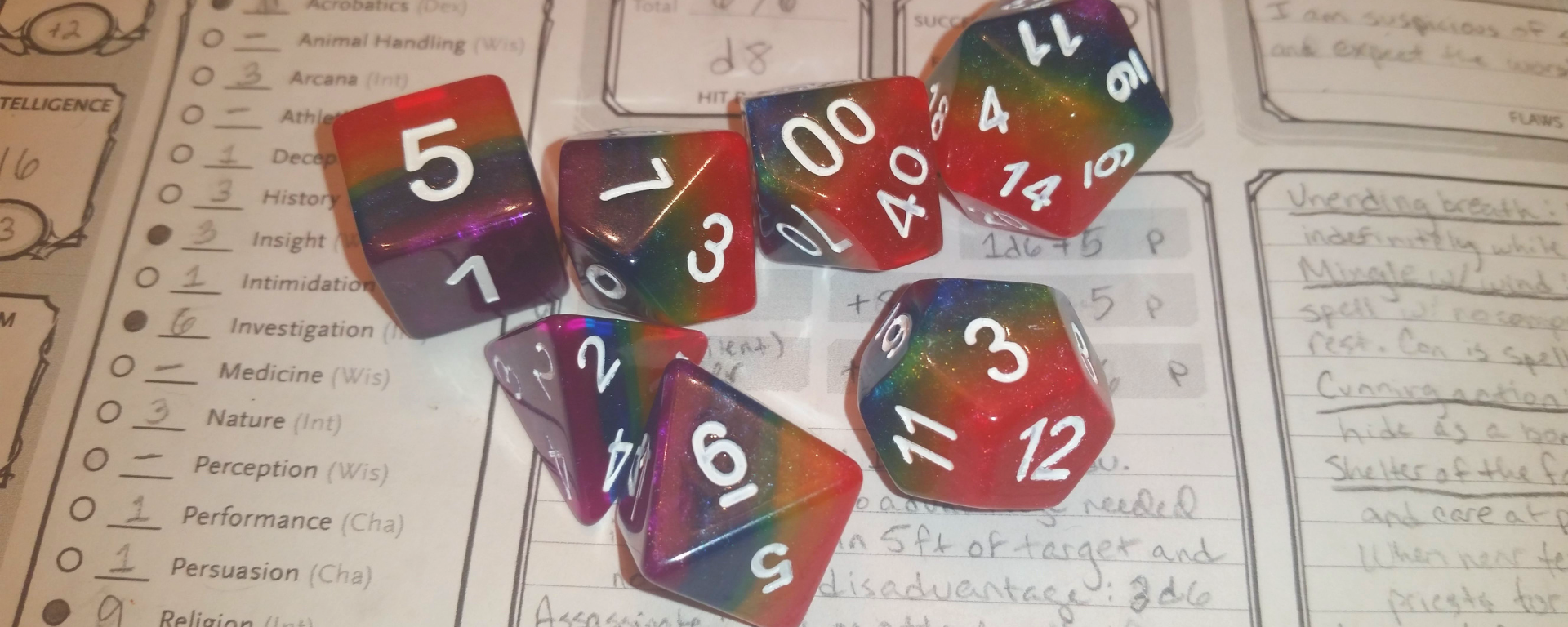Horror and suspense are one of the many subgenres of tabletop RPGs. While most RPGs are centered around adventure, player characters will face many challenges along the way. In most RPGs, rolling the dice is enough to make your players’ hearts race, but adding in something a little extra can make your particular game unique.
What Drives Suspense And Horror In Your RPG System?

The Rules
In Dungeons & Dragons, the rules build in suspense by implementing the random. Though your character may be incredibly skilled with a sword, there’s always a chance to fumble a roll. It balances what your character excels at with the drama of not knowing exactly what will happen. The system also utilizes random encounters to flesh out the world while keeping players on their toes.
The Story
The story can also add horror and suspense elements to the adventure. In popular systems with long histories like D&D, there are a great deal of monsters and adventures that are horror themed. For instance, The Curse of Strahd and Tomb of Horrors, two of the most famous adventures in D&D, deal heavily with horror and suspense. In addition to these, there are countless third party adventures for nearly every system out there. These take horror tropes and monsters and prompt the GM to run the game like a horror movie.
How Can You Make Your Gameplay Unique?
https://tenor.com/embed.jsTo make your game unique, you can look both inside and outside the rules. Within the game, there are physical actions that the player takes (e.g. rolling the dice) and imaginative actions (e.g. a character reacting to a situation). Within the rules of D&D, rolling the dice is generally suspenseful. This could range from exciting to horrifying. While rolling to negotiate the price on ale isn’t all that stressful, rolling to take the final boss with one hit point left on your character sheet is.
The game master (GM) can utilize these physical actions for their own benefit. It never hurts to, for instance, prompt a player to roll a die and then write something down while nodding to yourself. While this roll may not be related to anything in particular and your “note” may just be scribbles, this keeps players on their toes. In addition to simply rolling dice, however, GMs can pull out other tools for players. Using real world items can add extra flavor to the game. Candles and props can set the mood, and tools and puzzles are a different way to finish a quest.
Looking To Other Things For Inspiration
https://tenor.com/embed.jsProps at the table can be anything from simple flavor to a way to gain an advantage or experience a setback in game. If the GM is feeling particularly crafty, they can create a real world equivalent to a puzzle the players are trying to solve. Handing the players a puzzle box or something similar can allow them to become more immersed in the game. To keep things balanced, the GM can even implement a system for hints for characters with high intelligence. Additionally, instead of rolling dice, the GM can use tarot or playing cards to determine the fate of the characters (this is used at the beginning of The Curse of Strahd).
For Imaginative actions, the GM can turn to horror movies for inspiration on villains. By examining what makes them creepy, the GM can flesh out their own world and characters. Moreover, the GM can leave something to the imagination. Give your players some room to imagine something horrifying. Don’t skimp on descriptions, but let a few things be left up to the imagination. You can also implement horror and suspense through raising the stakes using people or things that the characters care about. By delving into their backstory or using connections the characters have made through the course of the game, the GM can bring everyone closer to the story.
What RPGs Deal Specifically With Horror And Suspense?
https://tenor.com/embed.jsFor further inspiration, there are plenty of horror themed RPGs. World of Darkness and Call of Cthulhu both are famous for their settings. World of Darkness, which includes games like Vampire: The Masquerade, is an extensive series of games set in our world. In World of Darkness, the players are part of the hidden supernatural world, and have to navigate through it while sometimes living a double life. There’s plenty of intrigue and horror in this system. Likewise, Call of Cthulhu is themed to eldritch horror inspired by H.P. Lovecraft.
Additionally, one of the most simple yet effective horror games is Dread. Dread uses Jenga blocks instead of dice to tell a story. Every time a character does something where they could die, the player must make a pull. Knocking over the tower means death. The combination of telling spooky stories with high stakes while playing an inherently suspenseful game like Jenga makes Dread one of the best horror games out there. It was even the game used for Geek & Sundry’s horror RPG show Sagas of Sundry.
Featured image credit: Fiona L.F. Kelly/Geek Gals

